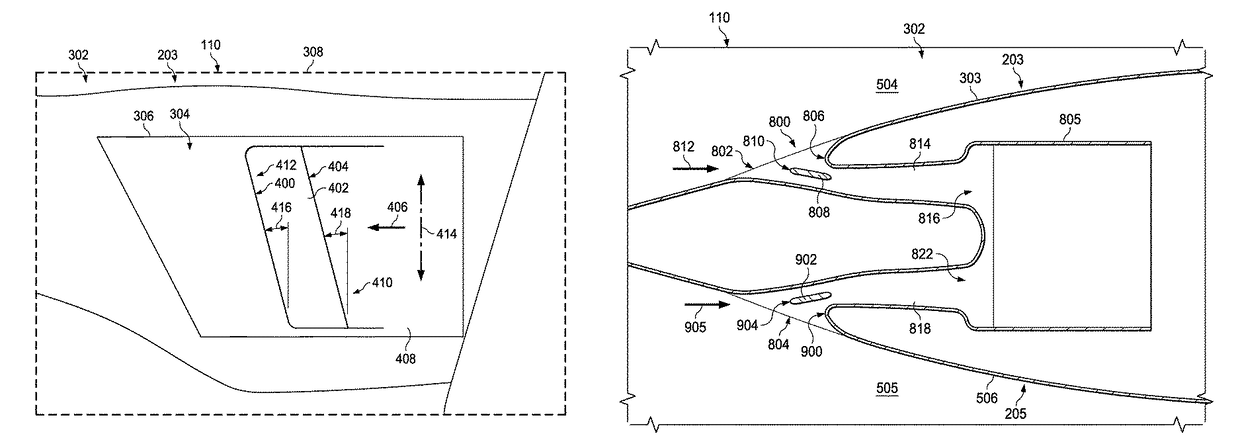Dual inlets for a turbofan precooler
a turbofan and precooler technology, applied in the field of inlets, can solve the problems of unfavorable engine operation, unfavorable engine operation, and inability to meet the needs of the user,
- Summary
- Abstract
- Description
- Claims
- Application Information
AI Technical Summary
Problems solved by technology
Method used
Image
Examples
Embodiment Construction
[0033]The illustrative embodiments recognize and take into account different considerations. For example, the illustrative embodiments recognize and take into account that it may be desirable to have an inlet system that does not disrupt the flow of air through the fan duct of an engine more than desired. By reducing the disruption to the flow of air caused by the inlet system, performance of the engine may be improved. In particular, this type of inlet system may improve the performance of the engine by reducing total pressure losses, static pressure distortion, or both.
[0034]Further, the illustrative embodiments recognize and take into account that it may be desirable to have an inlet system that allows a precooler to be mounted further forward than is currently possible using current configurations for inlets. By mounting the precooler further forward, away from the location where the structural pylon extends within the nacelle of an engine, larger precoolers may be installed wit...
PUM
 Login to View More
Login to View More Abstract
Description
Claims
Application Information
 Login to View More
Login to View More - R&D
- Intellectual Property
- Life Sciences
- Materials
- Tech Scout
- Unparalleled Data Quality
- Higher Quality Content
- 60% Fewer Hallucinations
Browse by: Latest US Patents, China's latest patents, Technical Efficacy Thesaurus, Application Domain, Technology Topic, Popular Technical Reports.
© 2025 PatSnap. All rights reserved.Legal|Privacy policy|Modern Slavery Act Transparency Statement|Sitemap|About US| Contact US: help@patsnap.com



